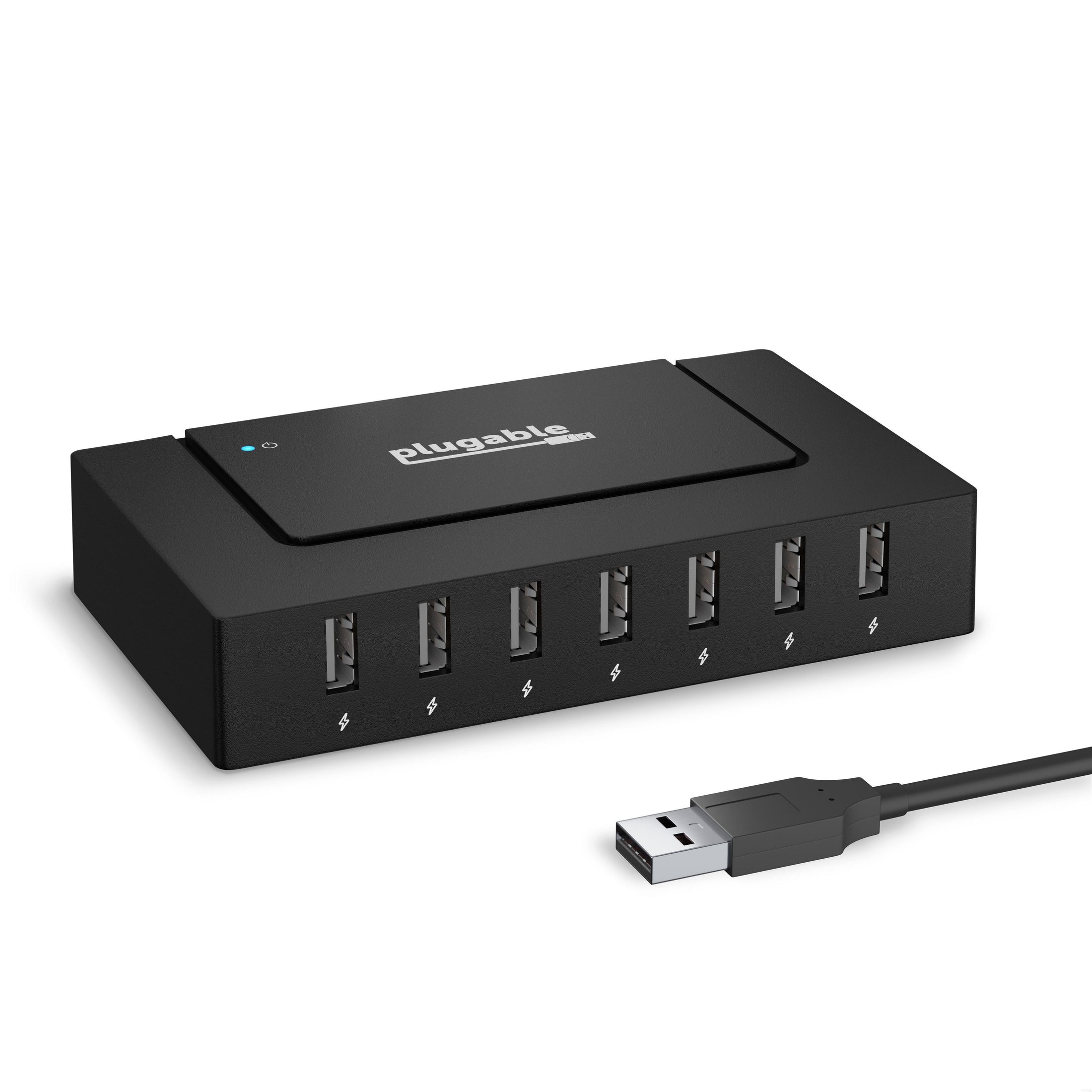
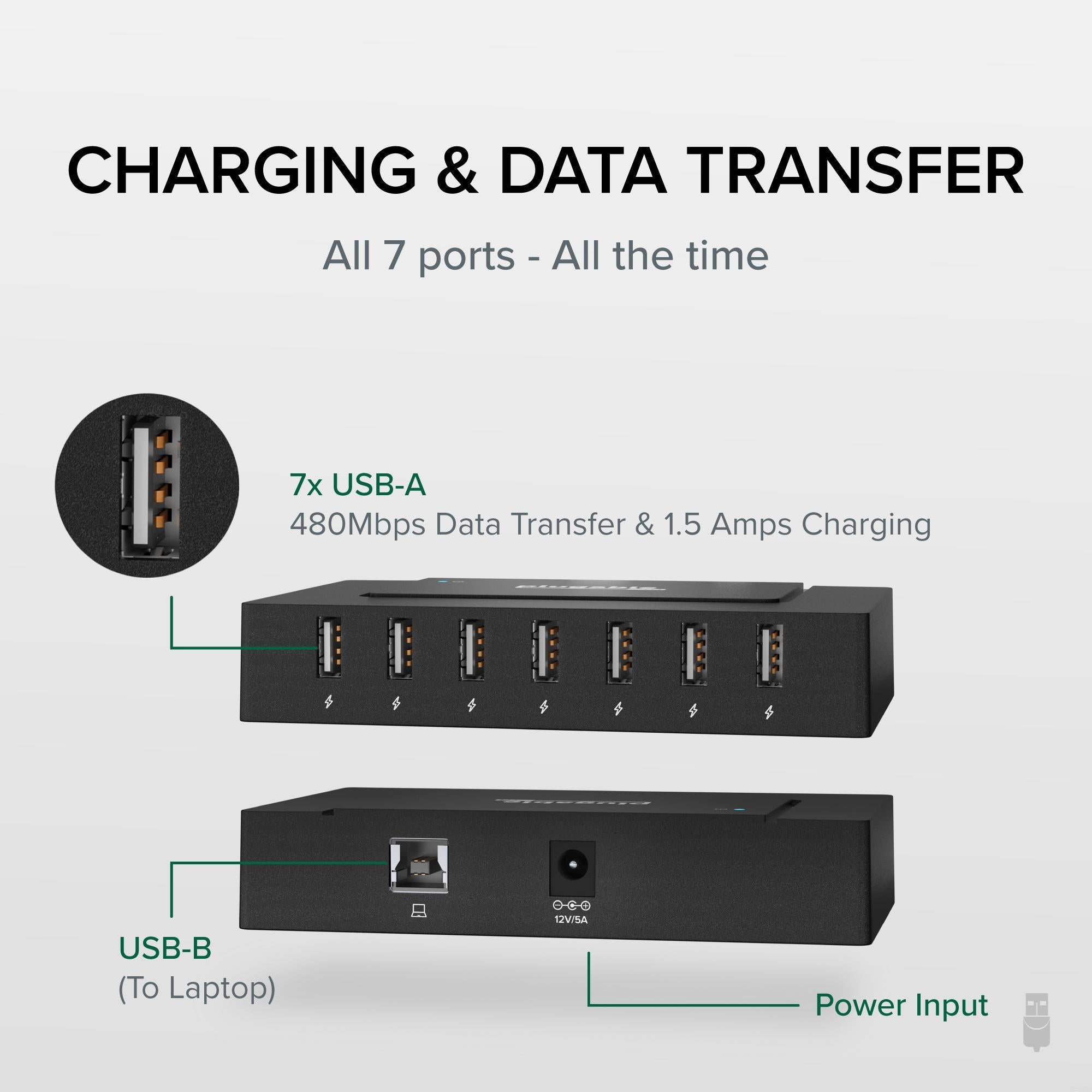
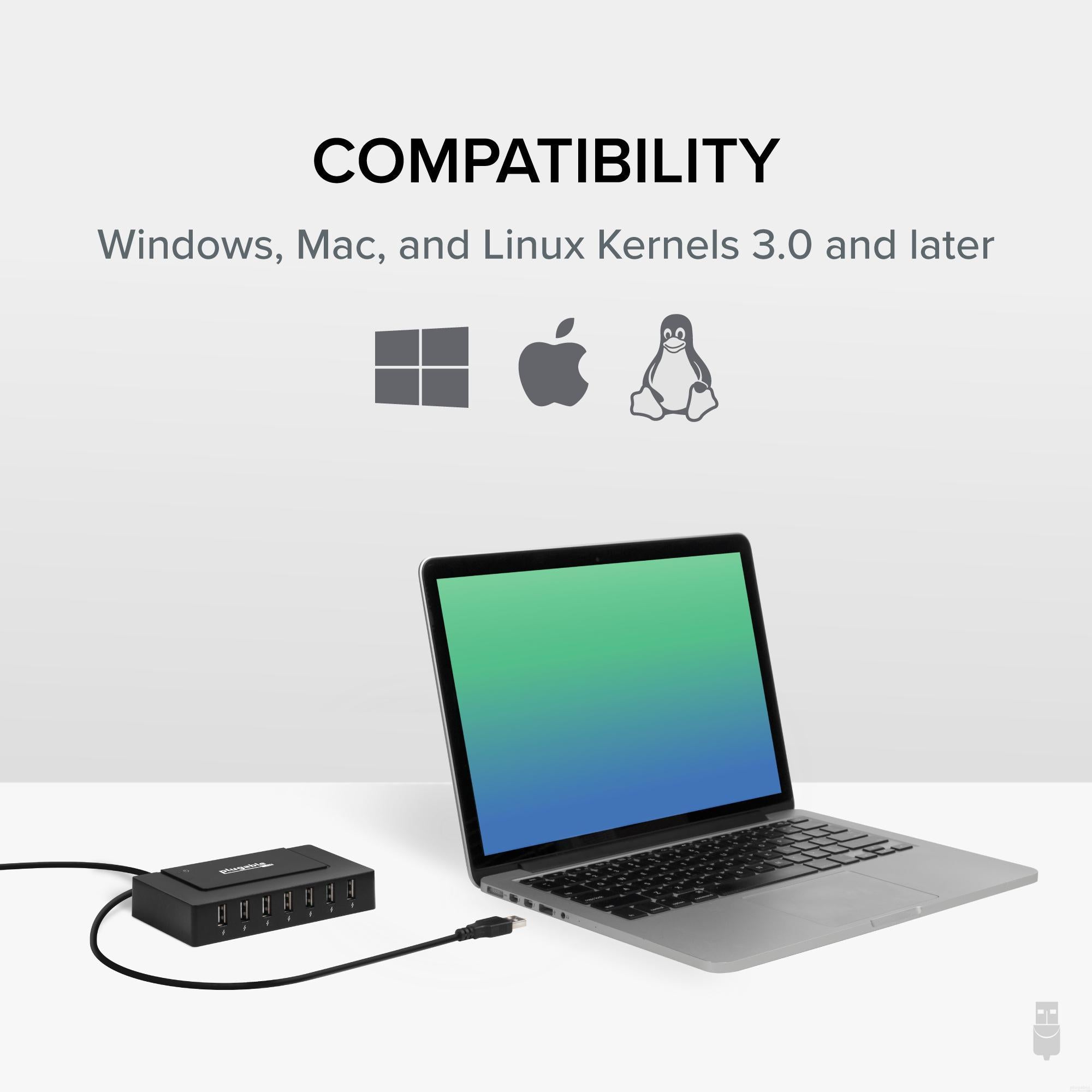
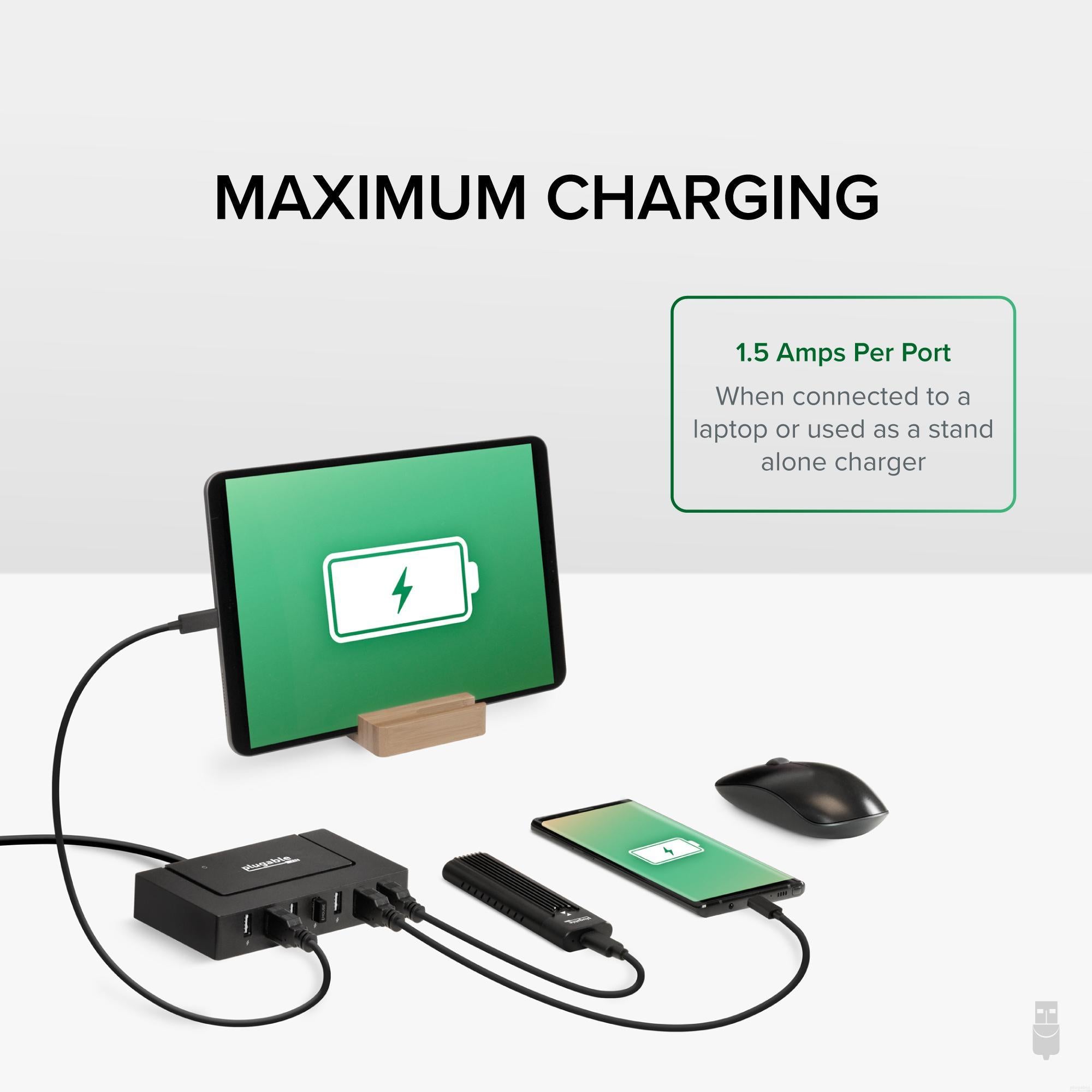

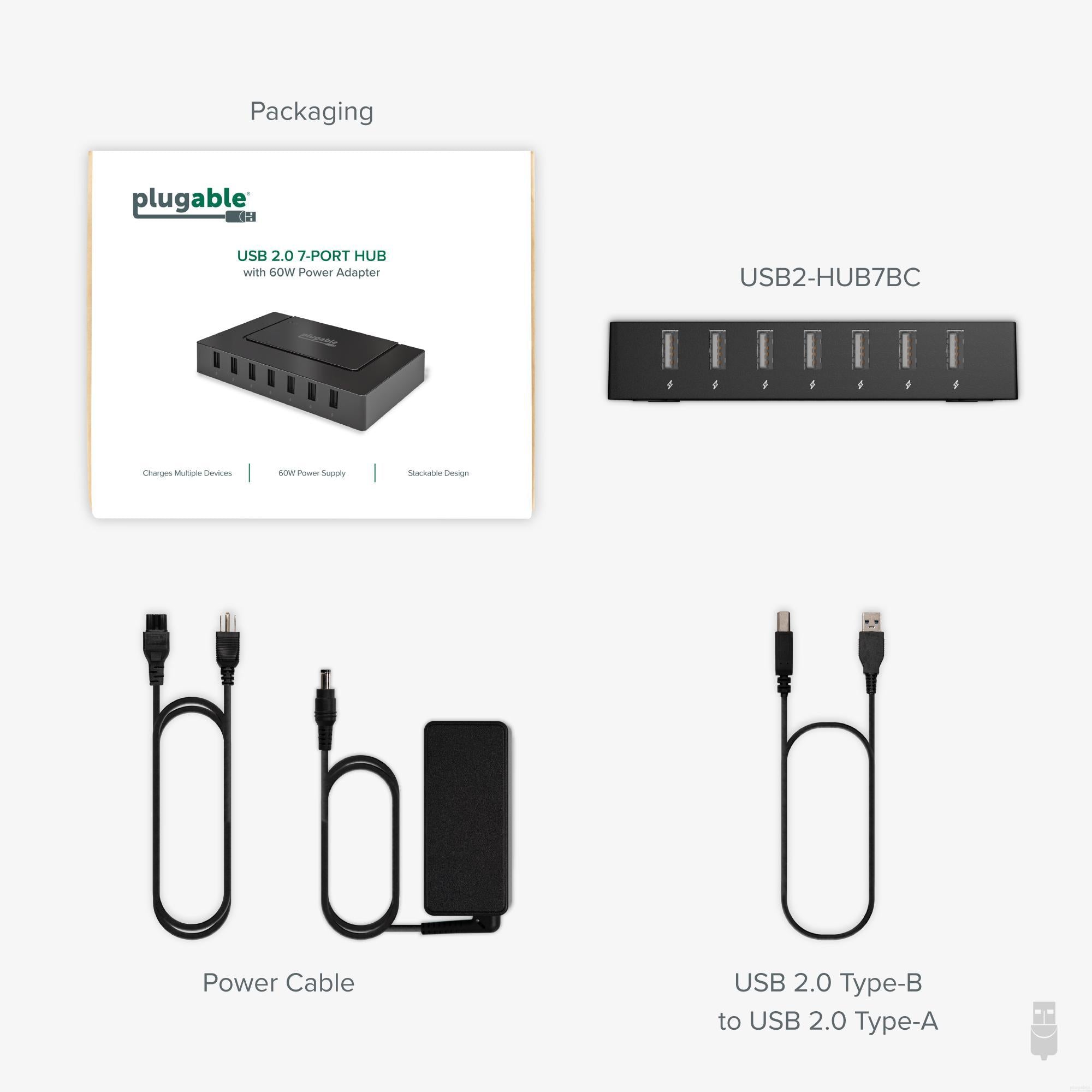
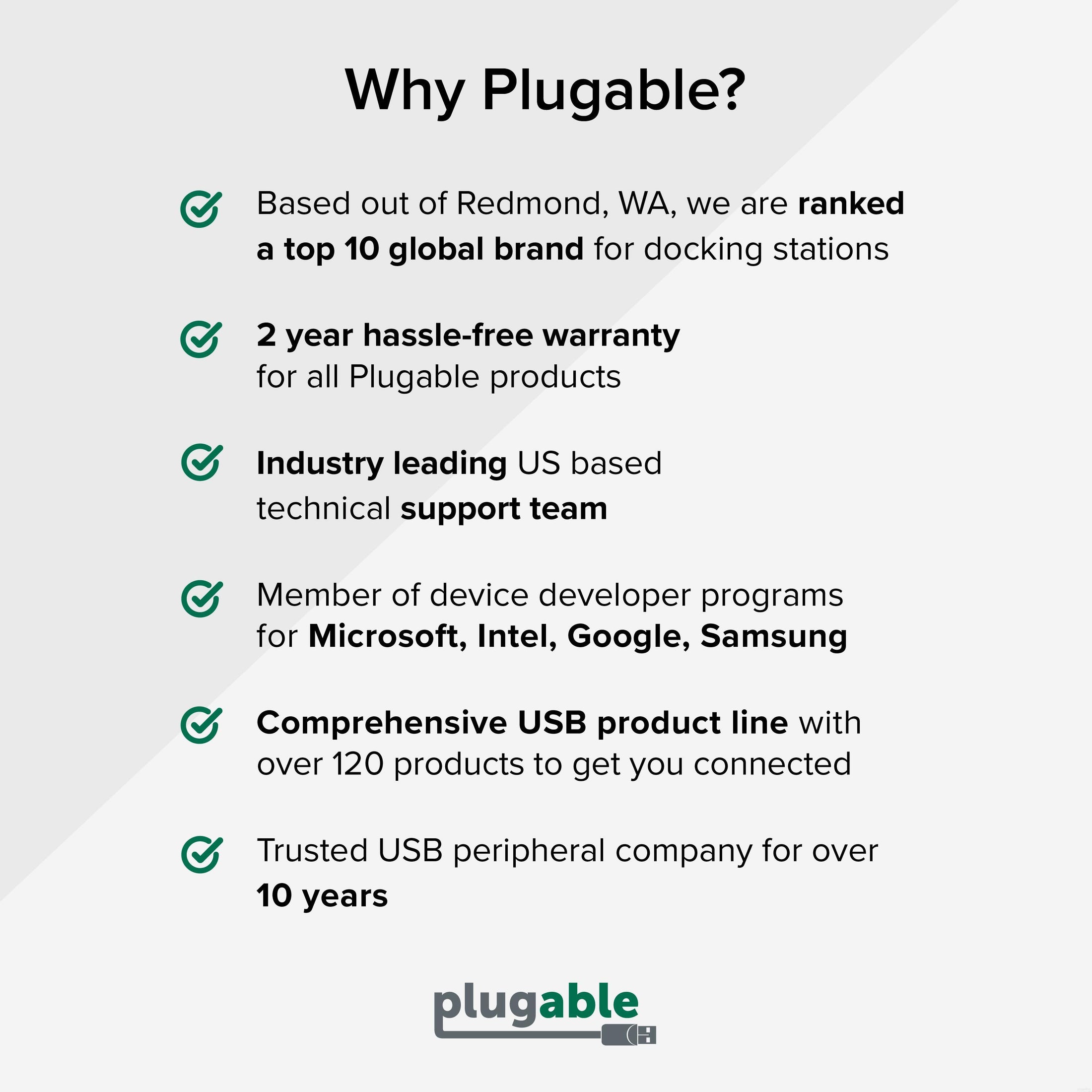







Plugable USB 2.0 7-Port Hub with 60W Power Adapter
$34.95 USD
SKU: USB2-HUB7BCAmazon Rating : (251 Reviews)
Features
- Data Transfer—Plugable's USB 2.0 7-Port High-Speed Hub adds 7 additional data transfer ports to your laptop
- Compatibility—This powered USB hub is compatible with Windows, macOS, and Linux/Unix computers at USB 2.0 speeds up to 480Mbps
- Design—As a USB hub for laptops, the stackable design lets you add USB data ports in a compact footprint.
- Recommended Use—At home it's a USB hub for laptops, or a station for multiple devices. At school, stack several to easily sync student devices. In big operations, deploy as many hubs as you needed test at high volume
- 2 Year Warranty—We love our Plugable products, and hope you will too. All of our products are backed with a 2-year limited parts and labor warranty as well as Seattle-based email support

Plugable's USB 2.0 7-Port Hub
The Plugable USB2-HUB7BC expands USB connectivity by enabling up to seven USB 2.0 devices to be added to any USB 2.0 capable desktop, laptop, or tablet computer.The hub supports USB 2.0 transfer rates up to 480Mbps to allow data to move quickly between devices, ideal for high-throughput devices such as USB external hard drives, flash drives, and USB graphics adapters.
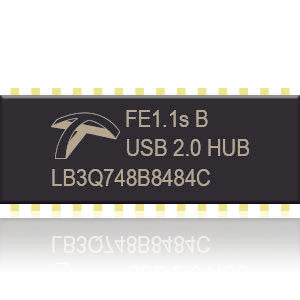
Technical Details
The hub features two internal Terminus Technology FE 1.1s Rev. B USB 2.0 hub chipsets for maximum forward and backwards compatibility between nearly all USB hosts and devices.The FE1.1s is an advanced USB 2.0 hub controller featuring low power consumption, comprehensive USB charging support, and supports USB power management, allowing for improved power-efficient operation.
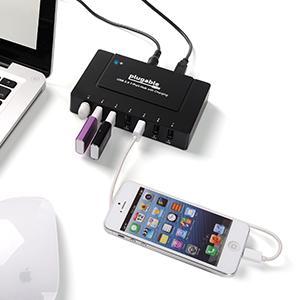
A Port For Everything
Most computers have an average of only 4-6 USB ports. With so many devices we depend on daily, that's just not enough. All seven ports are lined up front and center to allow easy insertion of devices with the power and host USB cable coming out the rear to reduce cable clutter.
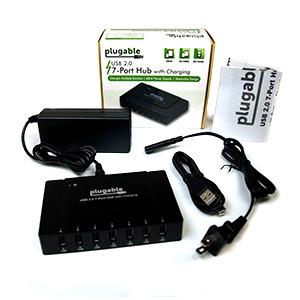
In The Box
- 1x USB2-HUB7BC
- 1x Robust 60W (12V, 5A) power adapter with a removable 6 foot power cable (standard IEC320 C7)
- 1x 3 ft/1m USB 2.0 A to B cable
In The Box
| Item and Quantity | Item Notes |
|---|---|
| 1x Plugable USB 7-port Hub (USB2-HUB7BC) | |
| 1x USB-B to USB-A Cable | |
| 1x 60W Power Adapter |
Included Cables
| Port Type (Side 1) | Cable Specification | Port Type (Side 2) | Cable Length | External Power for Cable |
|---|---|---|---|---|
| Male USB-B (2.0) | USB 2.0 (480Mbps) | USB-A | 1.0m/3.28ft | No |
Power
| Port | Placement | Power Host / Device | Connection Type | Notes | Voltage | Amperage | Wattage |
|---|---|---|---|---|---|---|---|
| Power Supply | Rear | Device | Region-specific Power Adapter | Check Compatibility Table | 12.0V | 5.0A | 60.0W |
USB To Devices
| Port | Placement | Version and Link Rate | Features | Voltage | Amperage | Wattage |
|---|---|---|---|---|---|---|
| 7x USB-A | Front | USB 2.0 (480Mbps) | Battery Charging 1.2 | 5V | 1500mA | 7.5W |
Connection To Host
| Port | Placement | Version and Link Rate | Features |
|---|---|---|---|
| 1x USB-A | Rear | USB 2.0 (480Mbps) |
Physical Stats
| Item | Size (H x W x D) or Length | Weight | SKU or Part Number |
|---|---|---|---|
| USB 2.0 7-Port Hub | 2.54 x 12.7 x 7.62 centimeters 1 x 5 x 3 inches |
130 grams 4.6 ounces |
USB2-HUB7BC |
Get Started
- Connect the the hub to a power source using the provided 60W power adapter.
- Use the included USB 2.0 B to A cable to connect the hub to the host system.
- Attach your USB devices to the hub.
After you connect the hub to your PC by a USB cable, the hub will be installed automatically. There is no driver pop-up for the hub itself, only for downstream devices connected through the hub. To verify installation, use a simple device like a USB mouse or flash drive connected through the hub. Or, you can very by using Windows Device Manager or Mac System Profiler.
Questions? We're here to help! Please reach out to us at support@plugable.com
Filter Help Articles and Frequent Questions by Category
Choose one or more filters within each category to narrow down the articles. Each selection will result in only displaying articles that include all of your choices.
Articles
Well how about that, it looks like we don't have any articles matching your filters! Try removing one of your choices or clear the filters to show all articles.
You can always contact support if you need help too!
USB Port Types
USB-A
pietz, CC BY-SA 3.0 , via Wikimedia Commons
This is the standard USB connection that most computers offered prior to the introduction of USB Type-C (USB-C). Even after the introduction of USB Type-C, this is still quite common.
It can provide data transfer rates up to the USB 3.1 Gen 2 (10 gbps) specification depending on the host and device, but does not directly support video in the way that USB-C Alternate Mode does. This limitation makes DisplayLink USB graphics adapters and docking stations ideal on systems that do not have USB-C, or in instances where more displays are needed beyond available video outputs of a PC.
USB-B
Fred the Oyster, CC BY-SA 4.0 , via Wikimedia Commons
IngenieroLoco, CC BY-SA 4.0, via Wikimedia Commons
This type of connection comes in a couple different styles depending on whether USB 3.0 and higher transfer rates are supported (bottom graphic). Usually this type of connection is used to plug into USB devices that do not have a fixed cable connected, such as USB docking stations, USB hubs, printers, and others.
USB Mini-B
Fred the Oyster, CC BY-SA 4.0 , via Wikimedia Commons
One of the first connectors for charging a smartphone, wireless game controller (such as the Sixaxis and DualShock 3), and other small devices such as external hard drives. Not commonly used today, but is still used in some cases. Most devices using USB Mini B are using USB 2.0, though a USB 3.0 variant does exist. This specification also added USB On-The-Go (OTG) functionality, though it is more commonly implemented with Micro USB.
USB Micro-B
Fred the Oyster, CC BY-SA 4.0, via Wikimedia Commons
IngenieroLoco, CC BY-SA 4.0 , via Wikimedia Commons
A smaller connector that serves many of the same uses as the Mini B connector, with added optional features such as Mobile High-Definition Link (MHL) to allow devices like smartphones to output video to larger displays without requiring a dedicated port for video output.
The larger variant of USB-B is most commonly used for external hard drives for higher 5Gbps transfer rates.
USB-C, Thunderbolt™ 3, and Thunderbolt™ 4
Niridya , CC0, via Wikimedia Commons
The most recent USB connection, USB Type-C (USB-C), represents a major change in what USB can do. The connector is smaller, can be connected in two orientations, is able to carry substantially more power and data, and can directly carry video signals of multiple types (HDMI, DisplayPort, etc.) Intel has also adapted the USB-C connector for use with Thunderbolt 3 and Thunderbolt 4.
It is important to note that while all Thunderbolt 3 and Thunderbolt 4 connections are USB-C, not all USB-C connections can be used with Thunderbolt 3 or Thunderbolt 4 devices.
More details regarding physical USB connections can be found on Wikipedia . The graphics depicted here are adapted from Wikimedia Commons by various artists under the Creative Commons Attribution-Share Alike 3.0 Unported license.
Self-Powered vs Bus-Powered USB Devices
While all USB ports provide some amount of power for attached devices, the available power may not be enough for certain high-current devices such as USB hubs or external hard drives. High-current devices usually come with their own power adapter, making them self-powered, in contrast to a bus-powered device that draws all of its power from the host computer's USB interface. Bus-powered devices can cause issues if they need more power than is available from the host machine.
Many of our devices that include power adapters, especially USB hubs, will function in either self-powered or bus-powered mode. However, even though the device may function, each additional device attached to the host computer reduces the total available bus power. If the power runs out, any USB device attached to the computer may suddenly disconnect. If this were to happen to a USB storage device, such an event could result in permanent data loss.
If a device comes with a power adapter, we recommend that the adapter stay connected at all times, otherwise the device may not function as designed.
Self-powered USB device - A device that takes all of its power from an external power supply
Bus-powered USB device - A device that takes all of its power from the host computer's USB interface.
Can the hub charge iPods/iPads and other smartphones?
Apple device charging behavior varies according to both the size of the device and whether it has a “Lightning” or “30 pin” connector.
Newer Apple devices with the “Lightning” connector, when attached to the BC 1.2 Standard compliant Flip-Up ports without a host computer, can charge at up to 1.5 Amps.
Older “30 pin” iPads will only charge when the iPad is turned off. When turned on, these older iPads will report “Not Charging”. 30 pin iPods, iPads or iPhones will charge only at the standard 500mA rate.
What do the blue LED lights indicate?
There is a blue led for each of the downstream USB ports on the hub. The LEDs turn on when a USB device is connected and recognized by the operating system. These lights may turn off even though a device is connected when the host computer operating system puts the device to sleep to conserve power. There is no master light to indicate the hub is receiving power.
My External hard drives disconnect randomly or when I sleep/wake my Mac causing an improper drive eject error message.
Hard Drive Updates:
- Check for and update external hard drive firmware if available.
- For Intel based Macs, perform an SMC and PRAM/NVRAM reset SMC.:
- Perform an SMC reset: https://support.apple.com/en-us/HT201295
- Perform an NVRAM/PRAM reset: https://support.apple.com/en-us/HT204063
- Disable Power Nap on Mac (in power settings, disable for when connected to AC power and battery if the customer uses the hub while also on battery power).
- If possible, test the USB hub and hard drives with a Windows PC to see if the issue persists there as well.
If this issue persists, if possible we have a tool that automates collecting a set of log files from your system. You can download the PlugDebug tool and learn how to use it by clicking on this link:
Ensure that you have the USB Hub connected to the computer when the PlugDebug application is run. Then send us a copy of the log files to Support@Plugable.com
Some or all of the USB ports are not working on my Hub.
If your USB Hub is having issues with some USB ports not connecting to the host computer, there are a few steps that you should try to resolve this issue.
Full power cycle reset:
- Disconnect the power supply, USB Host cable, and all devices from the USB Hub.
- Leave the USB Hub disconnected for 30-60 seconds.
- Reconnect the USB Hub’s power first.
- Connect the USB into the host, then plug USB devices back into the hub.
If this issue persists, if possible we have a tool that automates collecting a set of log files from your system. You can go here download the PlugDebug tool and learn how to use it.
Ensure that you have the USB Hub connected to the computer when the PlugDebug application is run. Then send us a copy of the log files to support@plugable.com
Do Plugable products support the Apple SuperDrive?
Unfortunately Plugable products do not support the Apple SuperDrive.
The Apple SuperDrive has stringent power requirements that can only be met by directly connecting the SuperDrive to your host laptop. As a result at this time Apple recommends only using their USB-C adapter cables. You can find more information on that here → How to connect the Apple USB SuperDrive
If you have purchased a Plugable product to use with your Apple SuperDrive, and would like some additional assistance please do not hesitate to reach out. You can do so by emailing support@plugable.com, or going to Plugable.com/Support.
Understanding Heat Generation in Electronics
It's not uncommon for users to notice a certain level of heat generation from electronics and by extension, Plugable products during operation. In this knowledge base article, we'll explore the reasons behind this heat generation and why it is considered a normal experience within reasonable limits.
Electronics, by their nature, generate heat during operation. This is primarily a result of the electrical current flowing through various components, such as integrated circuits, transistors, and other electronic elements. As Plugable products are designed to efficiently process and transfer data (among other functionality), some level of heat generation is inherent.
Factors Influencing Heat Generation:
- Power Consumption: The power consumption of a device directly influences the amount of heat it generates. Higher power usage, especially during data transfer or charging processes, can lead to increased heat.
- Enclosure Design: The design of the product's enclosure and its ability to dissipate heat play a crucial role. Adequate ventilation and heat sinks are often incorporated to manage and disperse generated heat effectively. This is evident in our TBT3-UDZ and TBT4-UDZ designs. The metal case in these docks are designed to function as a heatsink with thermal pads placed throughout the enclosure. This allows heat dissipation from inside to the outside, but will also make it feel as if the device is “too hot”.
- Ambient Temperature: The external environment may also play a role. Higher ambient temperatures can contribute to increased perceived heat from the product. This means that summer temperatures may increase the heat generation of not just Plugable products, but many other electronic devices.
Normal Heat Levels: While it is normal for electronic devices to generate heat, Plugable products are engineered to operate within safe temperature ranges. We conduct rigorous testing to ensure that the heat generated during normal operation falls within industry-standard safety parameters. While not all products are or need to be UL certified, we try to go by UL guidelines for thermal readings. The UL threshold is 77C/170.6F, and we aim for around 71C/160F.
Tips for Users:
- Ventilation: Ensure that Plugable products have sufficient ventilation around them. Avoid placing them in enclosed spaces where heat dissipation may be impeded.
- Usage Patterns: Intensive tasks such as high-speed data transfer or charging multiple devices simultaneously may result in increased heat generation. This is generally normal but may be more noticeable in such scenarios.
- Accessories: A number of our devices will allow for the connection of USB accessories and as such, these will require power. If too many “power-hungry” devices are connected, this will cause the device to run much hotter than expected. Be sure to keep in mind the power limits of your dock/device.
In conclusion, experiencing heat from Plugable products is a normal aspect of their operation. Users can rest assured that we prioritize the safety and efficiency of our devices. By understanding the factors influencing heat generation and following simple usage guidelines, users can make the most of their Plugable products while ensuring a reliable and efficient user experience.